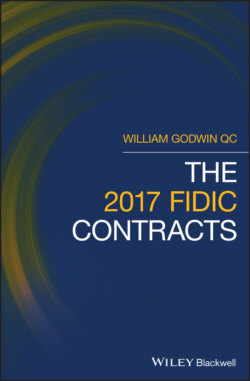Читать книгу The 2017 FIDIC Contracts - William Godwin - Страница 57
3.2.5 Clause 3.5/3.4 Sub‐paragraph (a)
ОглавлениеThe provision referred to in sub‐paragraph (a) of Section 3.2.4, above, is intended to avoid a situation which often arises under the 1999 contracts. The Engineer/Employer might issue an instruction without identifying whether it amounts to a variation. If the Contractor believes that it does constitute a variation, he will raise the matter with the Engineer or Employer and, if the Engineer or Employer does not agree, or does not address the matter, pursue it as a claim while continuing with the work. This leaves the matter in limbo and can in some cases mean that it is not resolved until some time later, even if the initial 28‐day claim notice under clause 20.1 is issued to preserve the Contractor's position.
It was thought that the project might be better managed by requiring the Engineer or Employer to identify whether an instruction constituted a variation and seeking at least to some extent to have the question whether it actually was a variation dealt with as it arose.
The 2017 contracts therefore require the Contractor to raise ‘immediately’ the issue whether an instruction does constitute a variation, giving reasons why he contends that it does, and in the meantime to hold back from commencing any work related to the instruction. To avoid undue delay to the works the Engineer/Employer must respond within seven days to the Contractor's notice; and in his response he must either confirm, reverse or vary the instruction. The deeming provision designed to give force to this time limit is that, if he fails to respond within the seven days, he is deemed to have revoked the instruction. If, however, he does respond within time the Contractor must comply with the terms of the response and so, if the instruction is confirmed, must proceed with the works accordingly.
This clause thus gives the Contractor the opportunity to raise as soon as the instruction is given the issue whether it constitutes a variation together with providing his reasons for that position; the expression ‘immediately’ is undefined, and it may well be the case that the Contractor will require some time after the instruction is issued before he can appreciate if it does amount to a variation, and articulate his reasons for taking that view. A response after such a period might well be ‘immediate’ and it was not therefore felt appropriate to define when the Contractor might raise the point more precisely, still less to attach any express time bar to it; but it is acknowledged that whether the Contractor has raised the matter quickly enough might give rise to argument.
The Engineer's/Employer's response may well not resolve the question whether the instruction constitutes a variation since within the seven days he might simply confirm the instruction and need not give any reasons in response to the Contractor's reasons why he (the Contractor) considers that the instruction was a variation. It does, however, at least give the Contractor the opportunity to raise the matter in a considered way as it arises, and the Engineer or Employer an occasion to consider or reconsider if what he has instructed is a variation; the Engineer/Employer may be as eager to avoid unnecessary disputes as the Contractor. If the Contractor believes the response fails to address his points and that the instruction constitutes a variation he may, subject to clause 20.2,5 claim an extension of time and/or additional payment for any delay or additional cost resulting to him from complying with the instruction as if the instruction were treated as a variation under clause 13.3.1.
